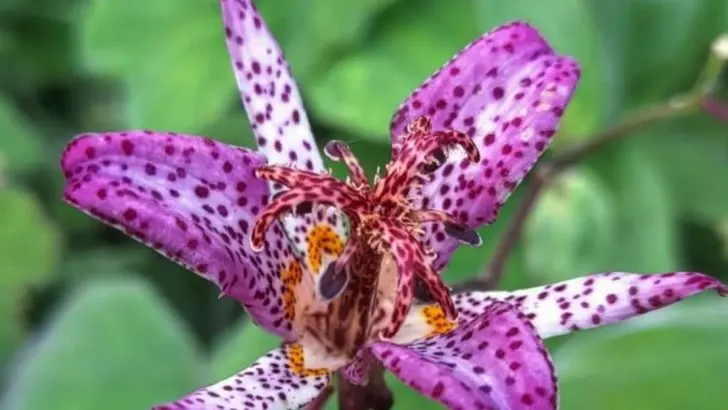Not every garden space basks in the sun—and that’s not a problem. These 17 shade-loving flowers are here to prove that low-light areas can still be full of vibrant color, texture, and life. If you’ve been overlooking that dim corner of your yard, balcony, or pathway, it’s time to let it shine.
From the dramatic blooms of impatiens and begonias to the soft elegance of columbine and astilbe, these plants don’t just tolerate shade—they thrive in it. Many are also surprisingly long-blooming, filling darker spaces with colorful accents that stand out even more in contrast to their surroundings. Some varieties, like torenia or lamium, also add ground-hugging interest, perfect for layering and edging.
With the right selections, shade becomes a feature, not a flaw. These flowers transform gloomy spots into lush, inviting retreats—without needing direct sunlight to impress.
Astilbe

Astilbe dares to stand out in the garden with its feathery plumes and vibrant hues. Originating from the woodlands of Asia and North America, this perennial delights gardeners seeking elegance in shaded areas. Its fluffy blooms, available in shades from pink to red, add texture and height to any garden bed.
Remarkably easy to maintain, Astilbe flourishes where many plants falter, demanding little more than moist soil. This flower’s resilience and beauty make it a favorite among shade garden enthusiasts. A reliable performer, it brings brightness that defies the dimmest of corners.
Hosta

Among shade-loving plants, Hosta reigns supreme. Known for its lush, broad leaves, which can be variegated or solid in color, this plant is a staple in shaded gardens around the world. Its foliage creates a stunning backdrop for other flowers, while its occasional lavender flowers add a delicate touch.
Hostas are not just about looks; they’re hardy and require minimal care once established. Their ability to thrive in less-than-ideal conditions has made them a beloved choice for gardeners. The diversity in leaf patterns means there’s a Hosta for every taste.
Bleeding Heart

The bleeding heart captivates with its gracefully arching stems adorned with heart-shaped blooms, often in hues of pink and white. Native to Asia and North America, this plant adds a whimsical touch to shaded spots.
Despite its delicate appearance, the bleeding heart is surprisingly robust. It flourishes in cool, shaded environments, offering a spectacular floral display in early spring. Its unique shape and romantic symbolism make it a standout choice for gardeners looking to add intrigue and emotion to their shaded garden areas.
Ferns

Ferns bring an ancient elegance to gardens with their lush, green fronds. Dating back millions of years, these plants are true survivors, seamlessly fitting into modern shade gardens. Their beauty lies in the intricacy of their fronds, which can vary dramatically in shape and size.
Ferns require low maintenance and thrive in moist, shady conditions. They are perfect for filling in gaps and adding a sense of timelessness to any garden. With a wide variety to choose from, ferns offer endless possibilities for creative garden designs.
Coral Bells
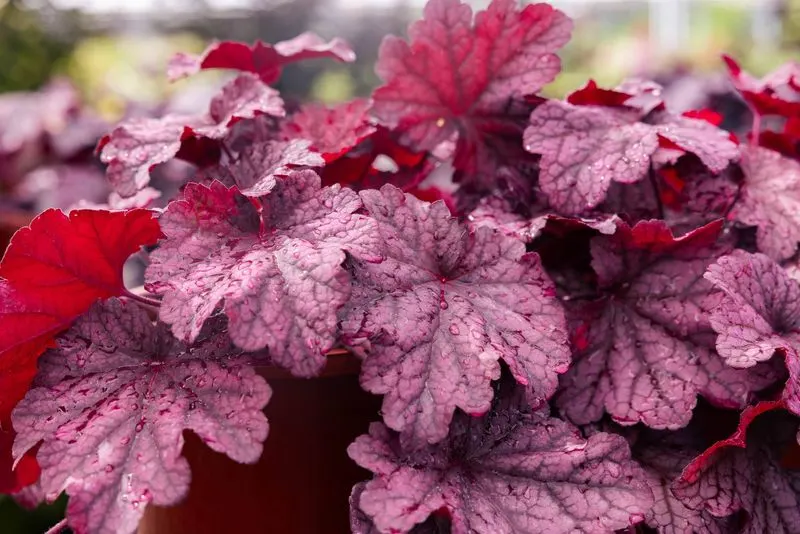
Coral bells are celebrated for their vibrant foliage, which spans a spectrum from deep purple to lime green. Though their bell-shaped flowers are charming, it’s the leaves that steal the show.
These perennials are well-suited for shade gardens, where they provide color and contrast against more muted plantings. Easy to care for, coral bells thrive in well-drained soil and can tolerate a range of light conditions, though they prefer shade. Their adaptability and striking leaves make them a popular choice for gardeners seeking diversity.
Japanese Anemone

Japanese anemones bring a touch of elegance to shaded gardens with their delicate white or pink blooms that appear in late summer and fall. These perennials originate from China and Japan and have a graceful, upright habit.
Perfect for adding height and late-season color, Japanese anemones are relatively low maintenance. They thrive in partial shade, making them ideal for woodland gardens or borders. Their ability to bloom when many other plants are winding down makes them a valuable addition for continuous interest.
Brunnera
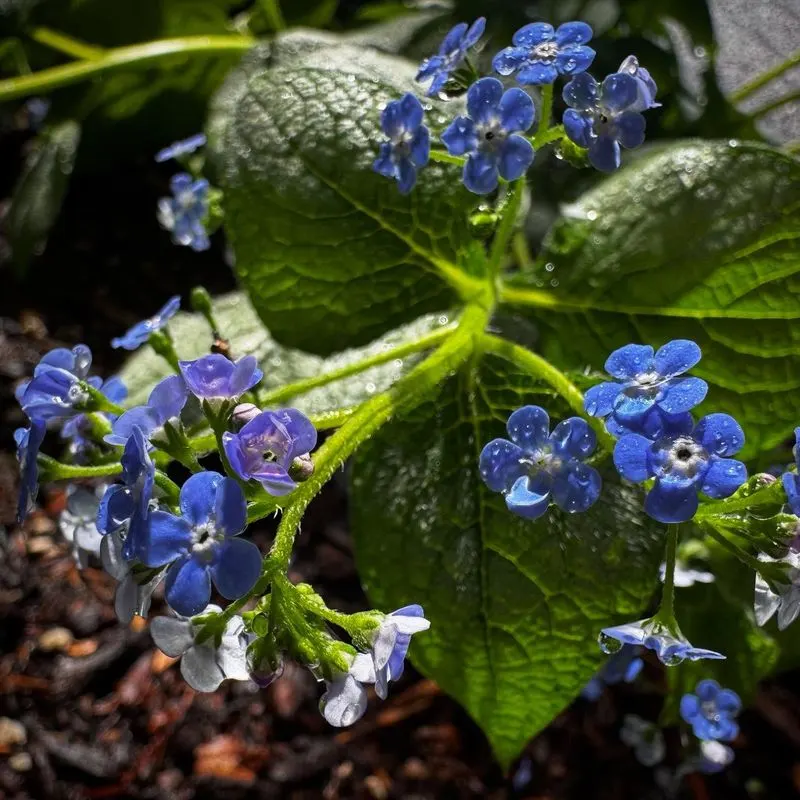
Brunnera, often called false forget-me-not, enchants with its heart-shaped leaves and sky-blue flowers. The foliage, often adorned with silver patterns, provides a stunning backdrop for its delicate blooms.
This plant thrives in shaded areas, where its leaves can create a luminous effect. It’s easy to maintain, requiring little more than rich, moist soil to flourish. Brunnera’s charm lies in its subtle beauty that quietly enhances any garden space, providing both color and texture without overwhelming its companions.
Lungwort
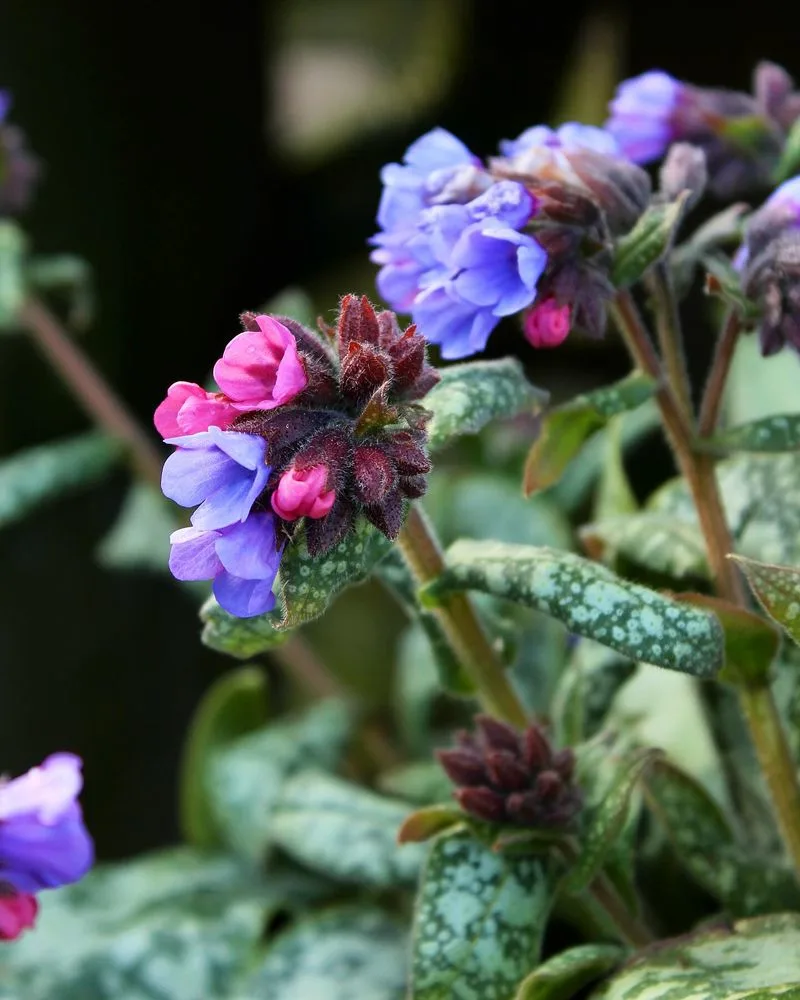
Lungwort offers a unique combination of spotted foliage and clusters of pink and blue flowers. This early bloomer is perfect for those seeking a bit of spring color in shaded areas.
Its name may not sound appealing, but lungwort is a garden favorite for its resilience and decorative appeal. The speckled leaves add interest even when the plant isn’t in bloom, ensuring that it remains attractive throughout the growing season. It’s an excellent choice for ground cover or as a border plant in shaded gardens.
Toad Lily
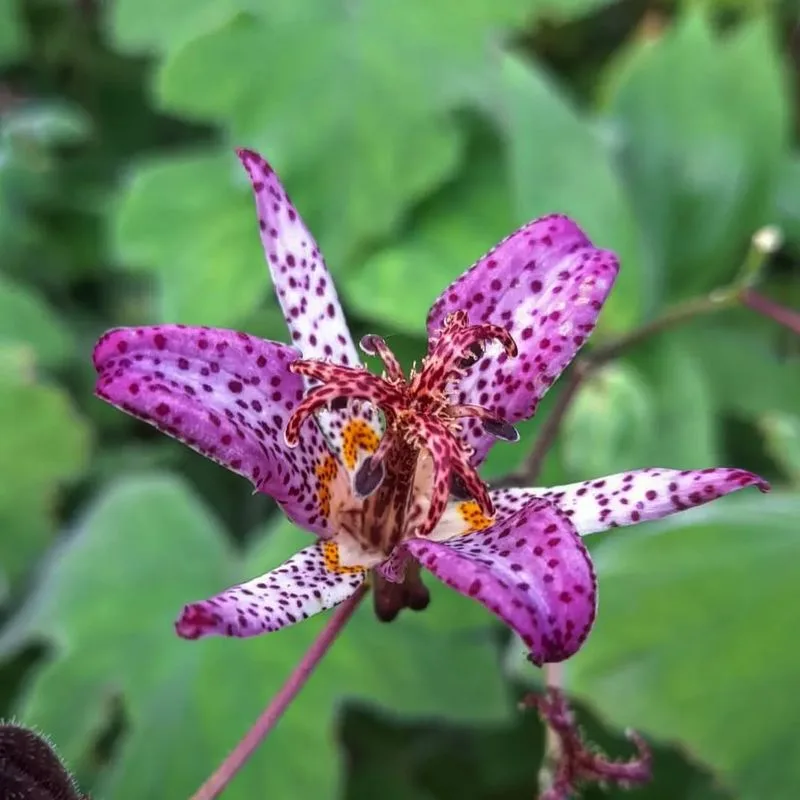
Toad lilies surprise with their exotic, orchid-like flowers that appear in late summer to fall. The blooms, often speckled and intricate, are a delightful contrast to their simple green foliage.
These perennials are perfect for shaded areas, where their unique flowers can be appreciated up close. Toad lilies are low maintenance, requiring only good soil and consistent moisture. Their unusual appearance adds a touch of the unexpected to any garden, making them a conversation starter among gardening enthusiasts.
Hellebore
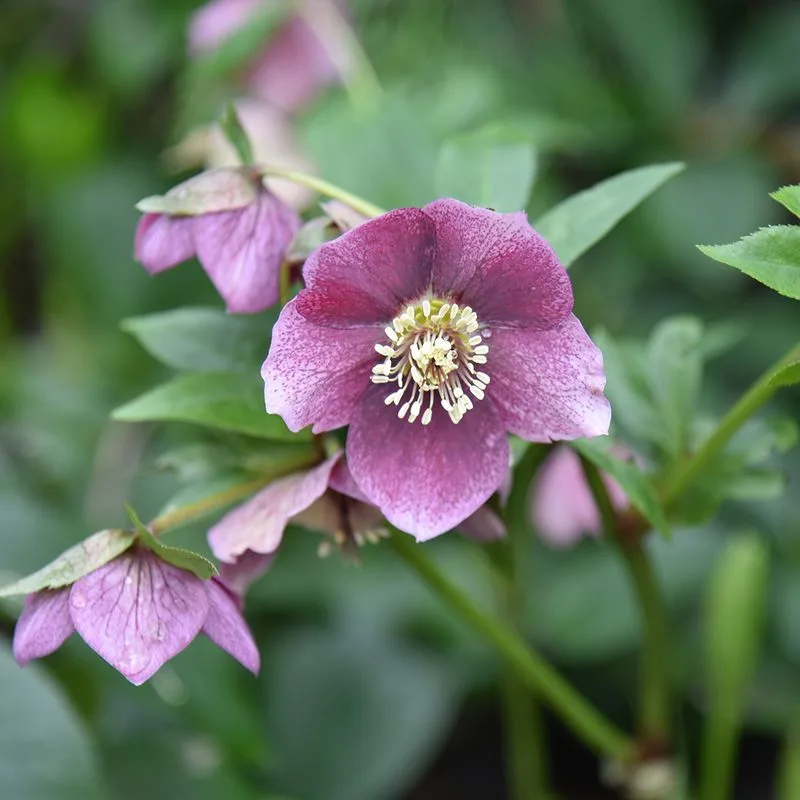
Hellebores, often blooming in late winter or early spring, are a welcome sight in shaded gardens. Their large, cup-shaped flowers, available in various colors, offer beauty when little else is in bloom.
These perennials thrive in partial to full shade, preferring rich, well-drained soil. Hellebores are hardy and long-lived, providing a reliable splash of color year after year. Their early flowering season makes them invaluable for gardeners looking to extend their garden’s visual interest through the colder months.
Foamflower

Foamflowers charm gardeners with their airy, white blossoms that dance above heart-shaped leaves. Native to North American woodlands, they add a delicate touch to shaded areas in spring.
These perennials are easy to care for and thrive in moist, well-drained soil. Foamflowers are excellent for ground cover, where they provide a soft, lush carpet of foliage and blooms. Their understated elegance and ease of care make them an ideal choice for those seeking simple beauty in their shade gardens.
Ajuga
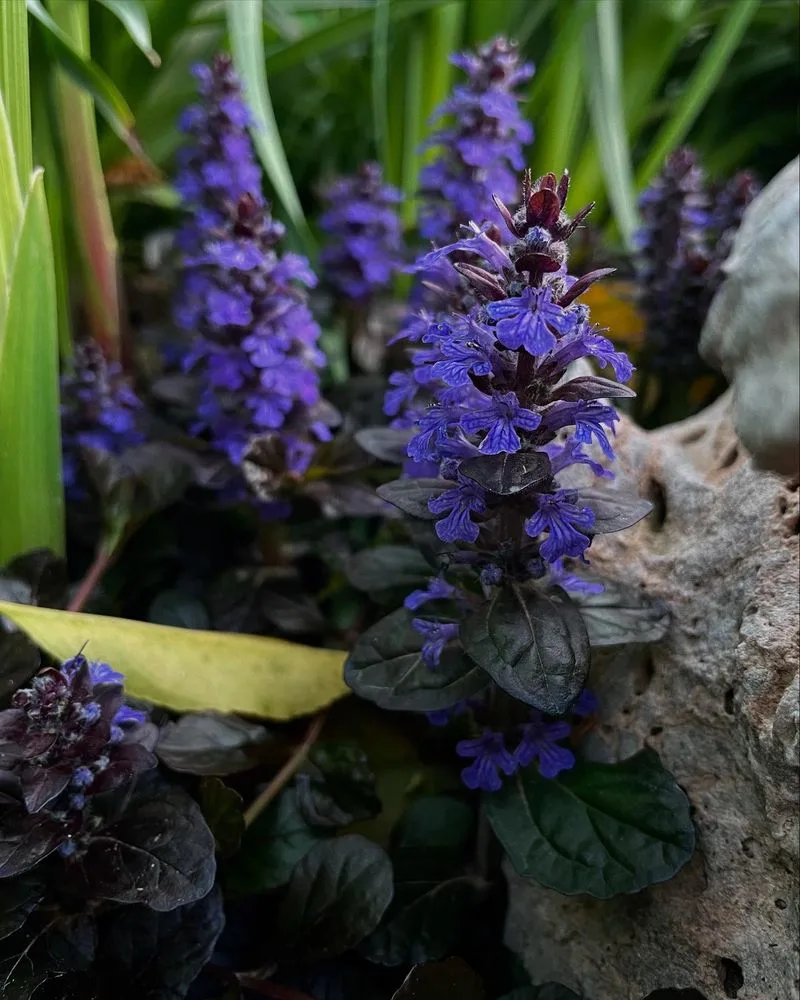
Ajuga, also known as bugleweed, is a versatile ground cover known for its glossy foliage and vibrant blue flower spikes. Originating from Europe and Asia, it forms a dense mat that can outcompete many weeds.
Ajuga’s colorful foliage, ranging from bronze to deep green, provides interest even when not in bloom. It’s an effective way to add texture and richness to shaded areas, requiring minimal maintenance once established. Ideal for filling in gaps or adding color to the garden floor, Ajuga is a reliable choice for gardeners.
Liriope
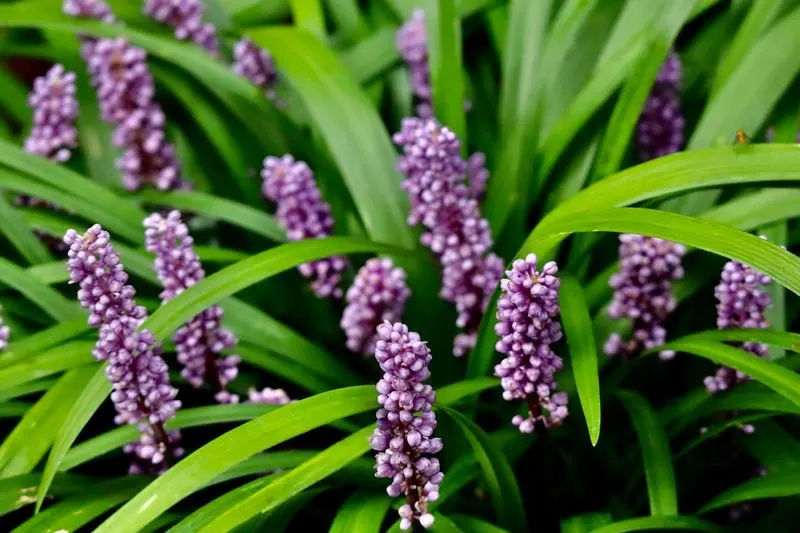
Liriope, or lilyturf, is a hardy perennial often used as a ground cover or border plant. Its grass-like leaves and purple flower spikes add both texture and color to shaded garden areas.
This plant thrives in a variety of conditions, including full shade, making it a versatile choice for difficult garden spots. Liriope’s low maintenance requirements and tolerance for poor soil conditions make it an excellent problem-solver where other plants might struggle. Its adaptability and understated beauty are appreciated by gardeners worldwide.
Heuchera
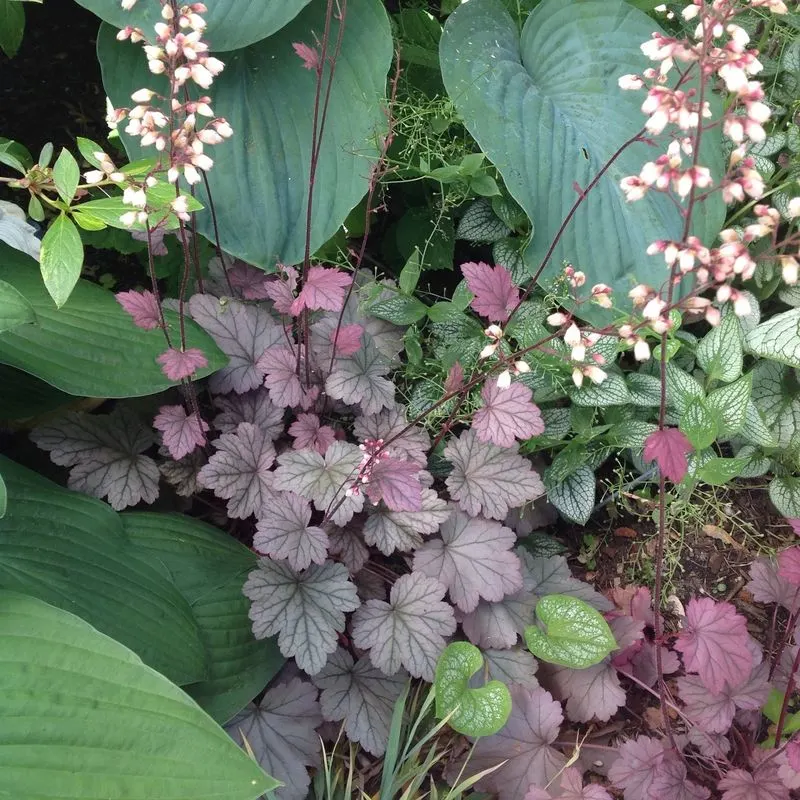
Heuchera, commonly known as alumroot, is prized for its richly colored, ruffled foliage that comes in a variety of hues. While its flowers are small, the leaves provide a striking visual impact.
These perennials are ideal for shaded gardens, where their colorful leaves add depth and interest. Heuchera is low maintenance and thrives in well-drained soil, offering gardeners a reliable option for adding color without much fuss. Their versatility and impressive range of colors make them a popular choice for adding vibrancy to the shade.
Bergenia
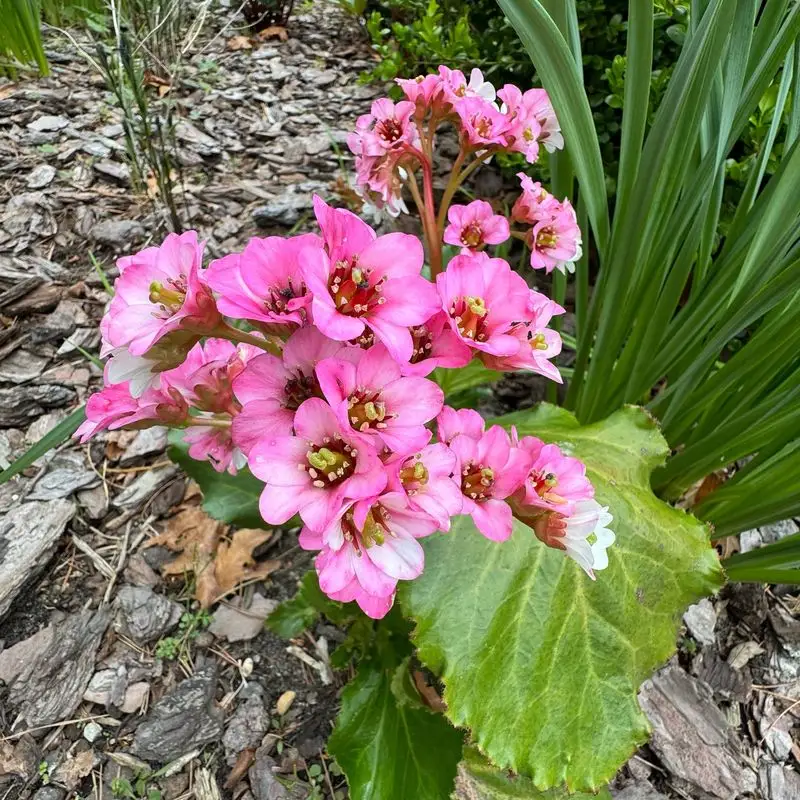
Bergenia, often called elephant ears, captivates with its large, glossy leaves and clusters of pink flowers. Native to Central Asia, this plant is known for its bold foliage that provides a year-round attraction.
In shaded gardens, Bergenia’s leaves offer structure and resilience, standing up to harsh conditions. The pink blooms add a touch of color in the spring, enhancing the garden’s aesthetic. Easy to maintain and highly adaptable, Bergenia is a staple for gardeners seeking robust foliage with a splash of floral color.
Solomon’s Seal
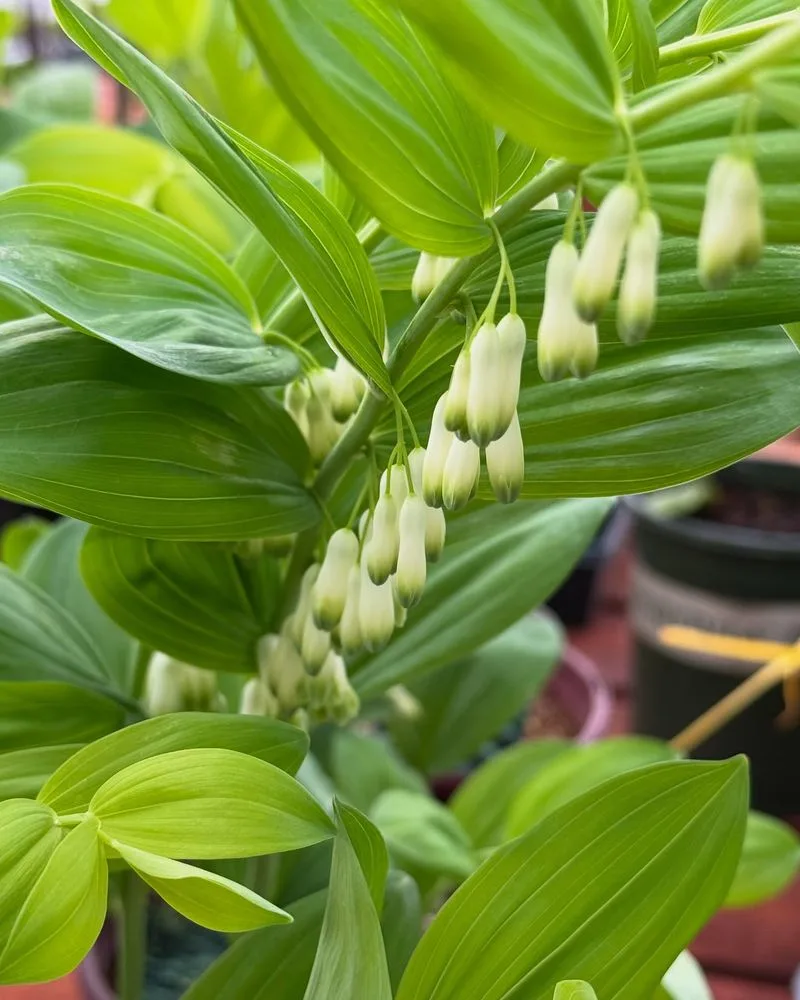
Solomon’s seal offers grace and elegance with its arching stems and dangling, bell-shaped flowers. This perennial is perfect for adding a touch of whimsy to shaded garden areas.
Thriving in partial to full shade, Solomon’s seal is low maintenance and appreciates well-drained soil. Its unique appearance provides visual interest throughout the growing season, and its rhizomes spread slowly, making it easy to manage. This plant’s distinctive form and subtle blooms make it a cherished addition to any shade garden.
Epimedium

Epimedium, or barrenwort, enchants gardeners with its heart-shaped leaves and delicate, starry flowers. Often found in woodland gardens, this plant thrives in shady conditions and provides year-round interest.
Its leaves can display striking color changes with the seasons, adding to its allure. Epimedium is drought-tolerant once established, making it a resilient choice for challenging garden spots. Its subtle beauty and adaptability make it an excellent companion for other shade-loving plants, adding layers of texture and color to the garden.

